Art World
Kenny Schachter Takes a Cut-Throat Art Quiz Before Hitting Art Cologne (With a Hangover)
How do you think our redoubtable columnist fared in London's annual Art Quiz?
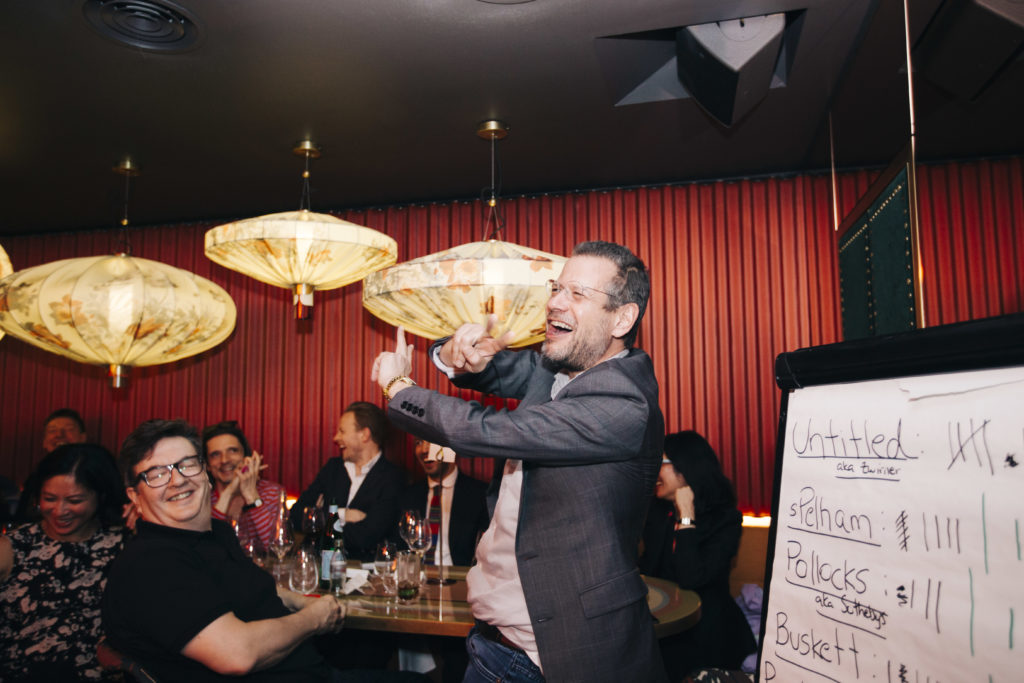
How do you think our redoubtable columnist fared in London's annual Art Quiz?

Kenny Schachter

In the brief respite between miart and Art Cologne, I was invited to join some art-world-style extracurricular activities closer to home: a charity quiz at the (so-called) Arts Club in London, a members-only redoubt that hadn’t seen a living, breathing artist on the premises until they initiated this chummy art contest five years ago, launched by Art Basel VIP rep Alia Al-Senussi and the collector Abdullah Al-Turki. The quiz masters were Gregor Muir—whose day job is director of collection, International art, at the Tate—and Sotheby’s Europe chairman Oliver Barker, with the event’s proceeds supporting IKON, a UK not-for-profit. Tables were hosted by various collectors and art dealers, with two presided over by teams from Sotheby’s (all clad in matching blue blazers, WTF) and Christie’s (who apparently were ordered to study before events kicked off). I was the MC for the quiz’s first edition, and wrote about it at the time.
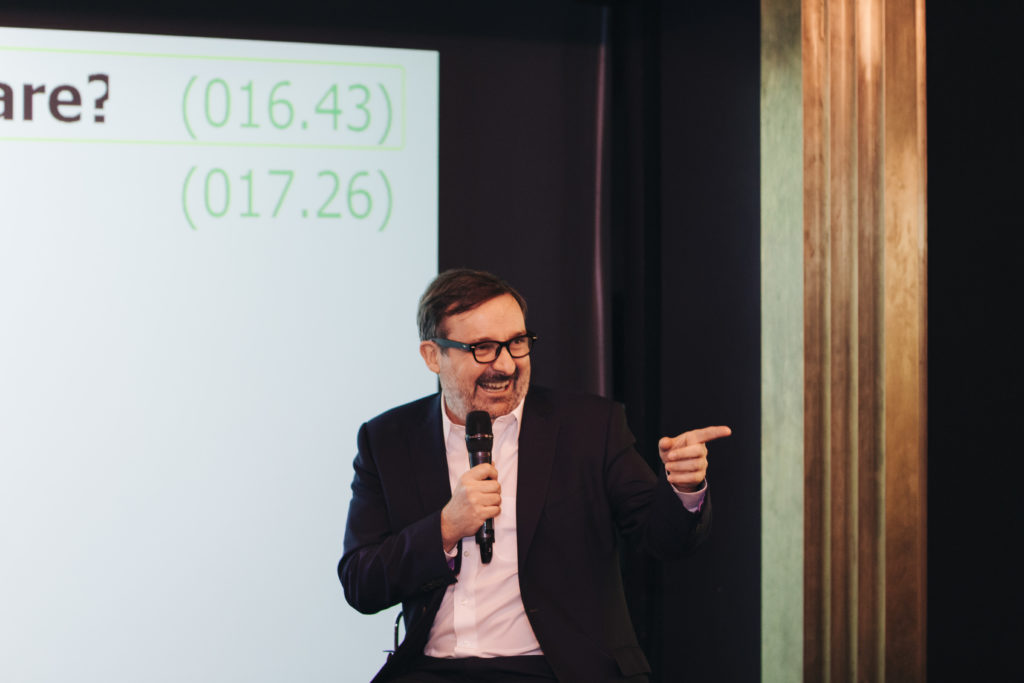
Gregor Muir, Art Quiz master of ceremonies. Photo by Luke Fullalove.
This go-round, I was recruited by David Zwirner UK director Angela Choon (to disarm me for future columns?) and joined the gallery’s illustrious table with a pair of Turner Prize winners—Mark Wallinger (2007) and Jeremy Deller (2004)—plus Mark Godfrey, who curated the Tate’s Sigmar Polke exhibit (much better than MoMA’s) and their upcoming Franz West show (can’t wait), and Whitechapel gallery curator Lydia Yee. Before the festivities kicked off, Angela warned me in no uncertain terms that she didn’t want to lose. Art has a bigger audience that sports and is apparently more competitive. There is, however, something mildly unsettling about artists, gallerists, and museum workers engaged in cutthroat competition for no ostensible reason other than winning. At any cost.
In this particular arena, there were strictly enforced rules and a penalty box for anyone that spoke out of turn. At one stage, I had to bail out Angela (for £100), whose boss could buy and sell me a few million times over. When I was master of ceremonies, Thomas Dane’s former director, Martine, stormed the stage to vehemently challenge the results of the quiz (which I wrote about). She has since left the art world; I am not sure if there was a connection. This year it was private dealer Emily Tsingou, a Lisson gallery recruit, screeching to contest an answer as though she was possessed. We take our games as seriously as our art.
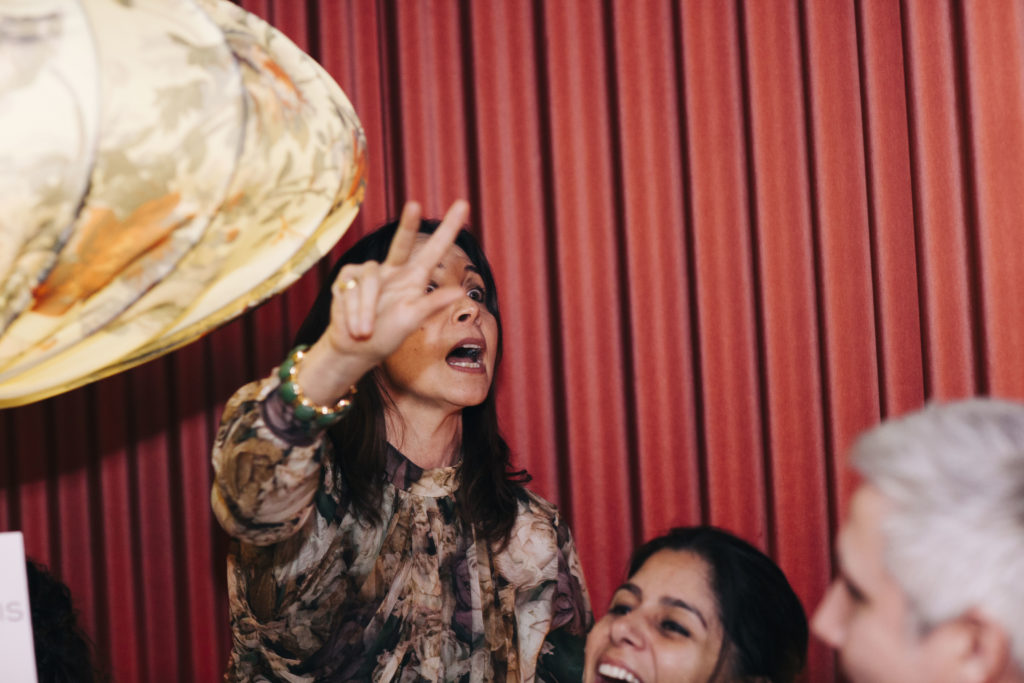
Emily Tsingou makes her impassioned case. Photo by Luke Fullalove.
As soft-spoken as the contestants were at my table, I became increasingly gregarious, venting aloud. There was an open bar seemingly for one, as I was the only one partaking (everyone else was sober). Not until I had half-written this piece did I come to the realization that I had given Martine and Emily a run for their money in the out-of-control department. Another table was hosted by art-world PR firm Pelham Communications, which was also handling communications duties for the quiz—why that was necessary is anyone’s guess. They even solicited me to write on the affair afterwards (successfully, it would seem). Scott Reyburn, the New York Times market reporter, was on their team—hmm, no conflict there.
In any case, we won! Underlying the game was a strong sense of camaraderie, which isn’t always so much in evidence elsewhere in the art world, like New York. Though when I received an email that Jerry Saltz won the Pulitzer during the evening and told the Times‘s Reyburn, he replied: “What for, his Instagram?”
I pretty much got all my art-fair jollies in Milan, so I’ll gloss over the 42nd Art Cologne, which was as flat as the country. Don’t get me wrong, I’m a fan of the fair and started my career curating a drawing show in 1990 for Sandra Gering Gallery entitled “German Paper.” On my way to this iteration, I bumped into Thaddeus Ropac on the plane from London, and by the time we touched down he had sold two Baselitz paintings for €500,000 a pop. Talk about a smooth landing.
Art Cologne is broken down into three floors of the convention center, and evolves from conservative, established art on the lower level to what one dealer euphemistically referred to as the “no-carpet” floor, connoting emerging galleries, on top. Where you choose to start dictates your experience, as attention spans inevitably dwindle from one floor to the next. Often, you will find prices directly affixed to the walls, which should be a universal law (though then I’d be out of a job).
There weren’t any major artworks by the home-team veterans, meaning no significant Sigmar Polkes (though there were loads scattered about, all under $1 million and none of consequence), no great Gerhard Richters, no banging Georg Baselitzes (sorry Thaddaeus), or even mediocre Anselm Kiefers (and god knows there are plenty of those about). What was of interest was the one-person booth by Galerie Lelong of German painter Konrad Klapheck (b. 1936), a missing connection between Surrealism and Pop who was written about by André Breton and who had exhibited with Arturo Schwartz and Sidney Janis in the past. (Prices at the fair were €150,000 to €250,000—you’re welcome). The frail artist, whose daughter was the first female rabbi in Germany, even made an appearance at the stand.
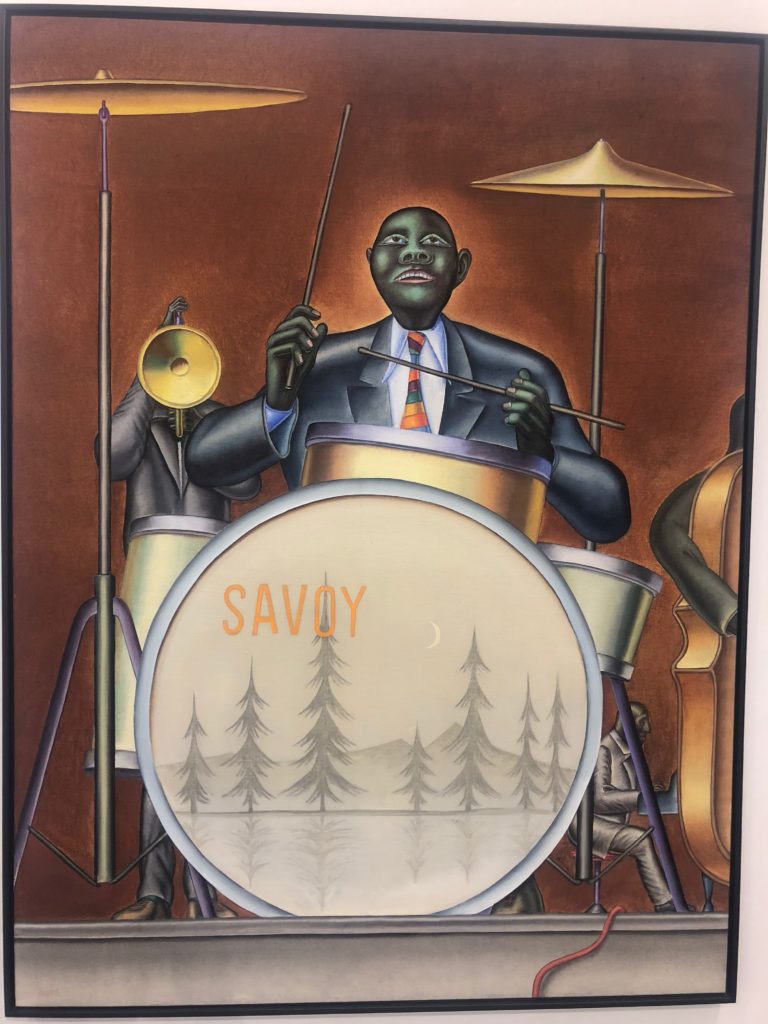
Klaphek does weird at Lelong at Art Cologne. Photo courtesy of Kenny Schachter.
Johann König and Galerie nächst St. Stephan both displayed similarly sized Katharina Grosse paintings from the same period ranging from €170,000 to €192,000, providing for some nice art-fair comparison shopping. (The disparity could not be explained by the VAT.) Either way, I wasn’t too bothered, having picked one up for €130,000 from Johann at Frieze this past October. Art inflation can be torrid (but, more often, not). I am also a big fan of the photography of Anna (b. 1937) and Bernhard Blume (1937-2011) from Cologne’s Heinz Holtmann gallery, which depict topsy-turvy relationships between the couple and the fragile objects they surround themselves with, like impossible-to-balance stacks of glassware. They are a joyful steal, starting at under €5,000.
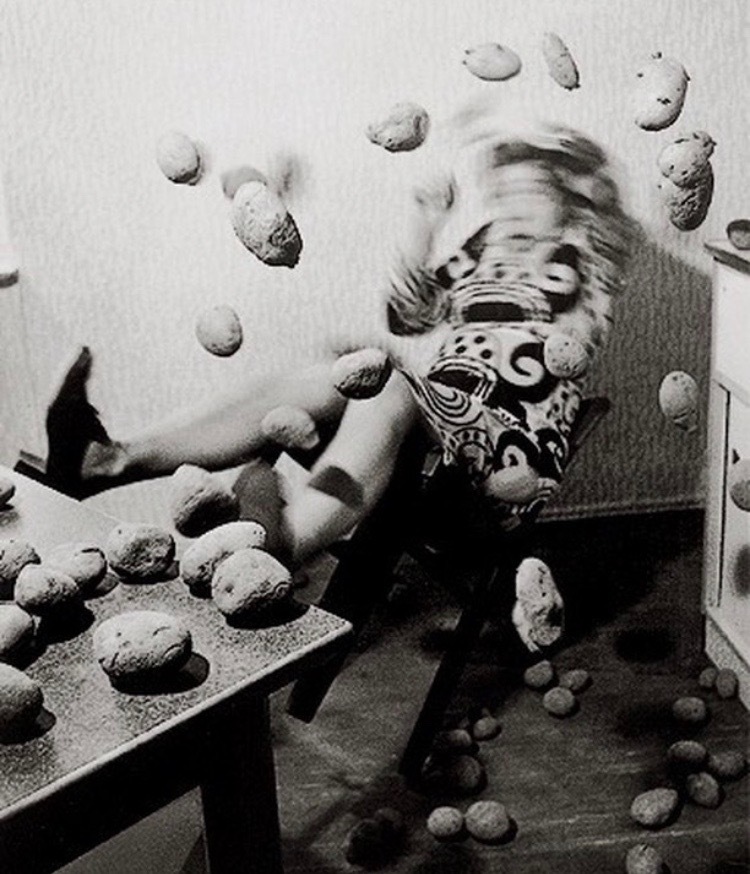
Whoops! The mismanagement of life by Anna and Bernhard Blume at Cologne’s Heinz Holtzmann. Image courtesy of Kenny Schachter.
Hauser & Wirth displayed a suite of Mary Heilmann paintings that spanned from historical to brand new, priced from $195,000 to $395,000. (I guess that sounds better than $200,000 and $400,000, respectively.) I exhibited Mary with the inimitable and sorely missed dealer/impresario Colin de Land’s (1955-2003) American Fine Art gallery in 2002; if she had been born with a penis, her prices today would be double what they are—at least.
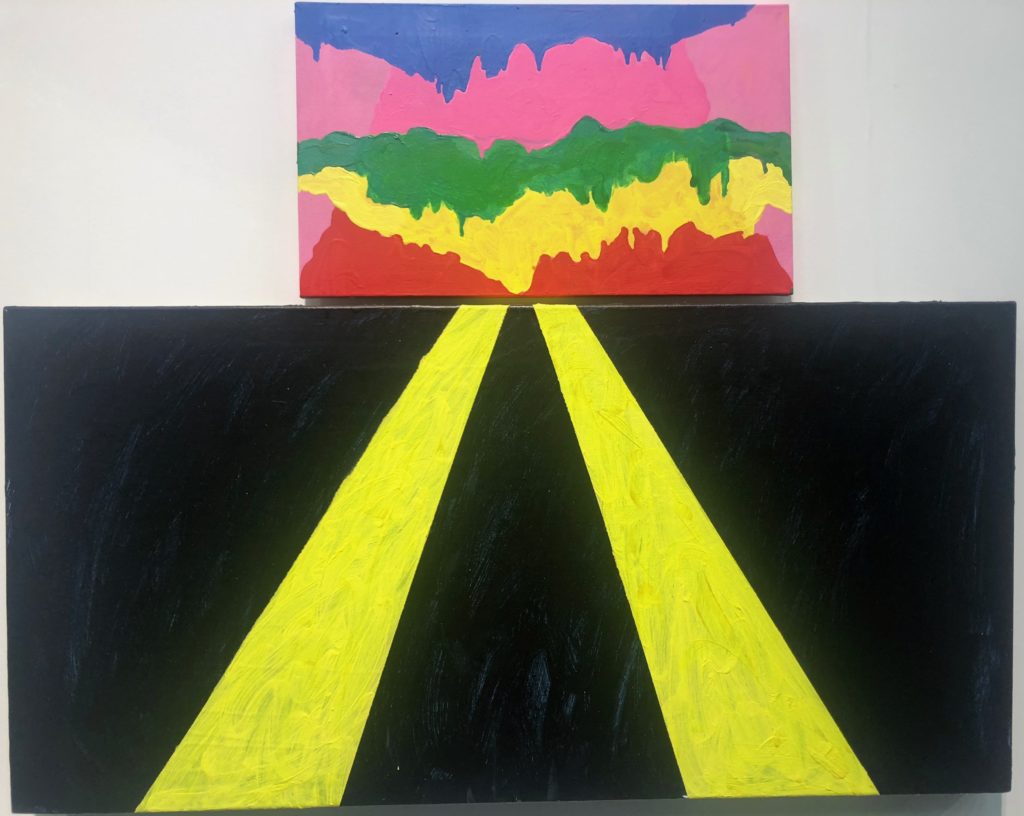
It’s not healthy how much I adored this Mary Heilmann at Hauser for $195,000—grab it while you can. Photo courtesy of Kenny Schachter.
Following the opening of Art Cologne, I made a day of visiting galleries (an upside of fairs being that they actually augment gallery attendance by out-of-towners). You could have crop-dusted Cologne with aspirin—it seemed as if the whole city was collectively hungover from the night before. My kind of town.
Former child actress Laura Henseler is another promising twenty-odd-year-old gallerist who has operated a Cologne space since 2015 under the made-up sobriquet Ginerva Gambino. I guess her reasoning was that no late-payers would fuck with someone who goes by Gambino. When I showed up at her closed gallery (it took a phone call to locate her), she had on view the multimedia work of Cathrine Czudej, the setting up of which entailed dragging two giant generators outside the gallery every day to fuel a crudely jerry-rigged machine to… polish pool balls. Okay.
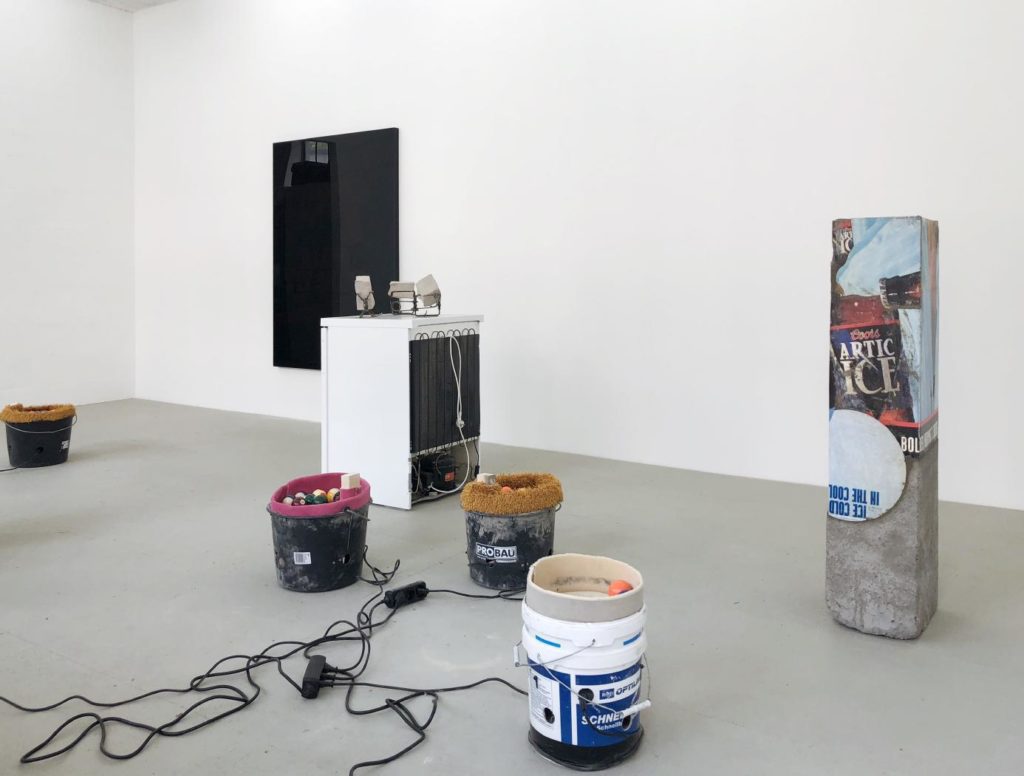
Cathrine Czudej at Ginerva Gambino. Don’t pay at your own risk…. Photo courtesy of the gallery.
Henseler bowed out of Cologne this time after selling out the drawings of Alex Wissel last year and still managing to lose money. She is now officially on “the hamster wheel,” having gained admittance to Basel’s Liste and London Frieze. She’s great and I bought a Czudej work. (Any collector worth their salt finds the lack of ready cash a challenge rather than a hindrance!) She even told me that I made her day when I did so. Imagine Larry G. phoning, “Kenny, I just wanted to say, that purchase”—of a work well under $10,000—”meant a lot to me, personally.”
I’m still buzzing from the after effects of the locally sourced content at miart and Art Cologne. Something happened at the fairs that hasn’t in a dog’s year: I actually learned things. In a recent Times of London interview, 84-year-old Rose Wylie—the next Zwirner show—said art is arrogant and self-centered. I collect her but think the opposite—that art surpasses the maker and is a vehicle for introspection and sharing (except at art quizzes). We are in perilous times, living in an increasingly militarized globe. Can an art piece contribute to establishing peace-peace? No, but at the least it can help to forget.